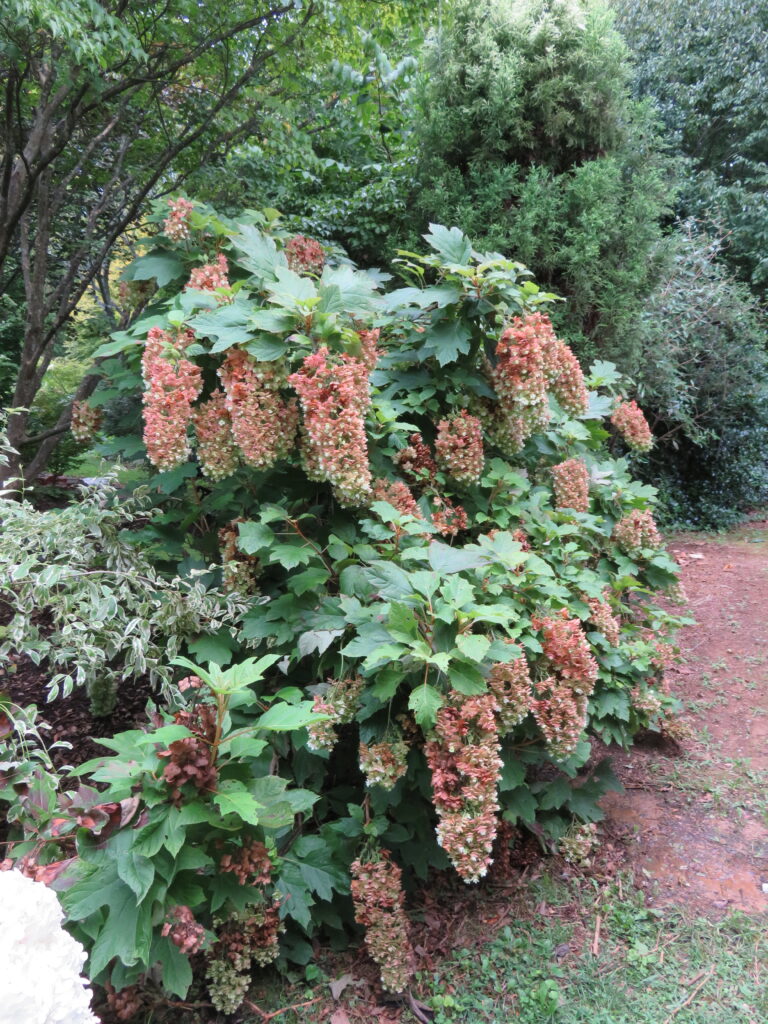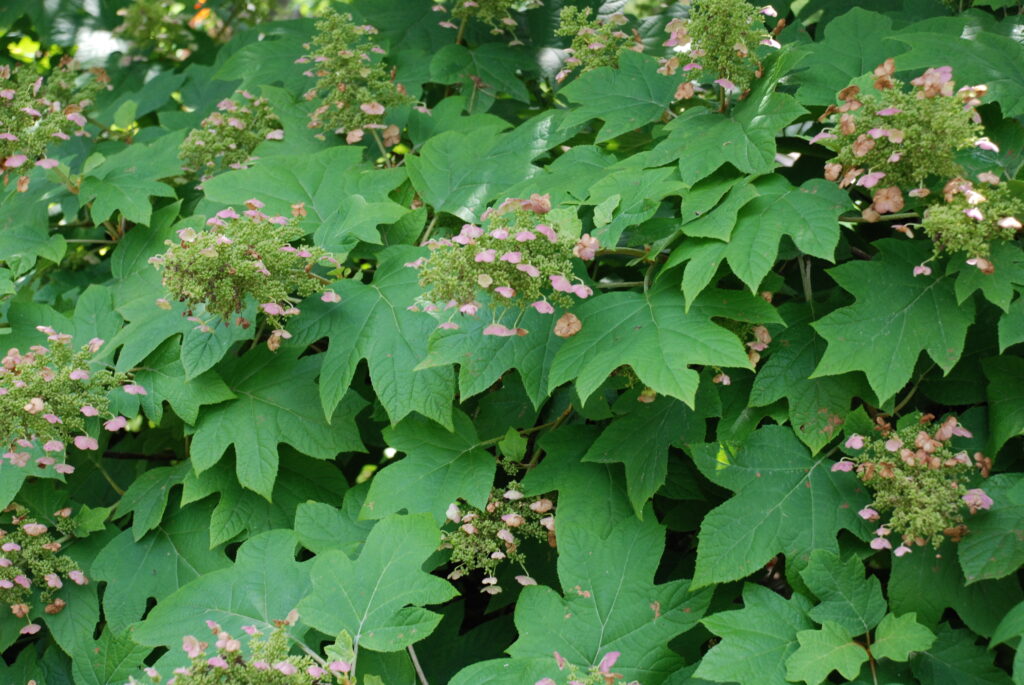
Oakleaf hydrangea is an upright, multi-stemmed, deciduous shrub that is native in the Southeastern U.S. (USDA hardiness zones 5-9). Oakleaf hydrangea should be planted in a sheltered location and winter protection (e.g., mulch, burlap wrap) in northerly areas USDA Zone 5, particularly when not fully established. Oakleaf grows in moist, fertile, well-drained soil in sun to part shade. Shrub appreciates a 3–4-inch layer of organic mulch to conserve soil moisture and lessen weed pressure.
Fall foliage color is attractive—its leathery leaves turn purple, orange-bronze, or red. The peeling, exfoliating branches also provide winter color and texture. Shrub may lose significant numbers of flower buds or die to the ground in harsh winters (temperatures below -10°F), thus lessening or totally destroying all blooms the coming year. Attractive peeling cinnamon-color bark adds winter interest after the foliage has dropped.
Shrubs bloom occurs on old wood. Prune, if needed, immediately after flowering in June – July. Usually, little pruning is required other than to limit the shape (height/width) of oakleafs. Flower buds are formed in late summer into early autumn. Winter is NOT the time to prune oakleafs except to clean off dead or damaged stems.
Favorite varieties include ‘Ruby Slippers’, ‘Munchkin’, ‘Gatsby Girl’, and ‘Snowflake’. For a small postage stamp garden and in containers, plant Gatsby Gal® or ‘Sike’s Dwarf’, both dwarf @3-4 ft. tall (and wide) cultivars. Leaves and flower panicles are smaller, tough reliable growers that require very little annual pruning.

Prune to remove old (spent) flower clusters, particularly those that are no longer attractive. Clip off attractive floral trusses to add to decorative arrangements. The old, dried cones are included in the winter holiday wreaths and swags.
Oakleaf hydrangeas have no serious insect or disease issues. Some susceptibility to leaf blight and powdery mildew. Aphids and spider mites are occasional pests. Like all hydrangeas, oakleafs are toxic to humans, dogs, cats, and horses. Unfortunately, they’re only slightly deer resistant.

 Posted in
Posted in 
